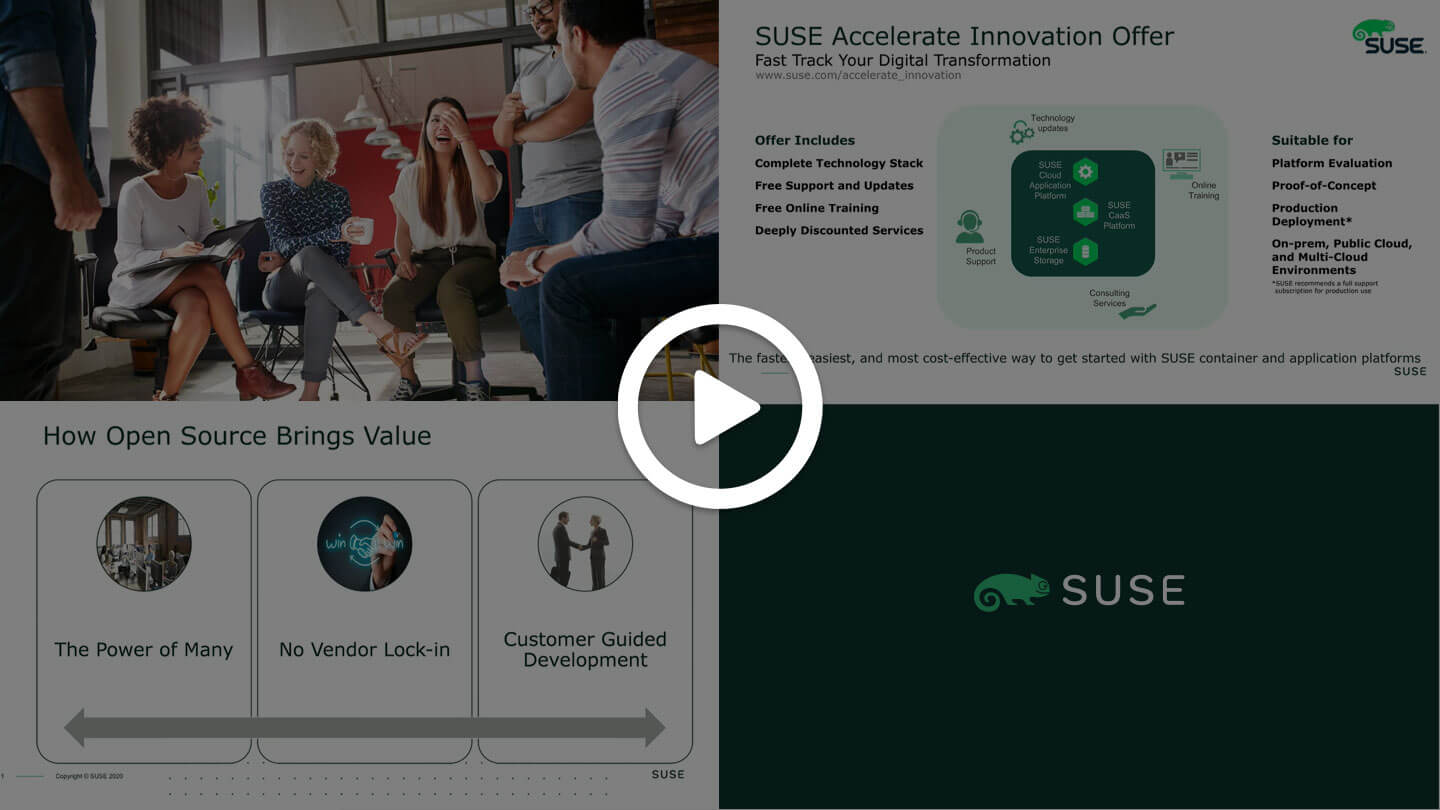Webinar: Want to dare to be different? Start here, with SUSE
The old adage in business technology says that “no-one ever got fired for choosing IBM.” That type of sentiment may well have held water a generation ago, when technology itself was something of a gamble to invest in, and an area only ever really ventured in by the cutting-edge corporate entity, or the generally foolhardy.
Today, choosing a stalwart solution provider might be relatively safe, but in many cases, it’s not indicative of the type of agility and foresight that today’s businesses need. Of course, the older workhorses of technology (think Salesforce and Oracle) still offer significant value to many. Still, no-one ever chose those platforms and vendors to reflect their differences or to better promote their unique offering to markets that are open for disruption. But conversely, organizations today need not choose technology that no-one’s heard of, or that’s unproven. There’s a significant path being trodden by large, well-established companies that give organizations the type of agility and scalability they crave but without sacrificing stability, security, interoperability, and standards.
In this new age of software and hardware, open-source vendors provide cutting-edge technological platforms on which the next generation of businesses can base their offerings. But underpinning those platforms are the support, security, and developmental momentum that allow companies to become something different, without going out on a limb.
In the webinar above (sign up in the embedded form), the type of tech we’re talking about gets showcased by SUSE, one of the world’s biggest providers of open source solutions. Open source software already runs the internet, powers the vast majority of all cloud services, and is the technology on which companies base their entire technology stacks. Twenty years ago, people were asking, how can software that’s free provide value? Today’s business professionals know that open source solutions are superior. Here’s why:
- Developed by thousands and thousands. Rather than a few hundred developers producing a proprietary piece of software, open source solutions are developed by thousands of users worldwide. New features and bug-fixes are drawn into the main fold (the phrase is “pulled”) after extensive real-life user testing by thousands of users.
- Open source code promotes security. Anyone using the software can examine the source code and try to work out ways that it could be used maliciously. Expert user bases plug security holes just like any other bug fix after peer review. Required standards get baked into the software and are there to be seen, so adherence to governance is assured — rather than closed, proprietary software where users have to take the manufacturer’s word for safety and adherence to data protection legislation.
- Built the way you build. Solutions like the Cloud Application Platform from SUSE allow you to create applications in the cloud in the same ways that your developers already work. Using technology that’s DevOps-friendly, organizations can quickly create, test, deploy, and scale business-focused applications using remote services as easily as bare-metal. Because your bare metal systems and the cloud use the same frameworks, all applications are hybrid- or multi-cloud ready from their conception.
- What you need may already have been done. With an active user base of developers at all levels in multiple verticals, thousands of specialist uses of any piece of software already exist. If you need an application to do something specific or specialized, the work required to achieve just that (or something very much like it) may already have been done, and the code published or even upstreamed (pushed back to the core developers for inclusion into the main software repositories). Why pay a thousand dollars a day for bespoke tweaks to proprietary systems when there’s often plug-and-play functionality out there?
- Industry-standard and bleeding-edge, together. With safety, speed to production, and reusability at their core, microservices like containers and container deployment technologies such as Kubernetes are immediately available. Alongside containerized environments, technologies that are time- and industry-proven are already running huge multinational organizations. Using open source technologies, your business can find just the right mix of the industry stalwarts and the disruptive, cutting-edge of all that’s new.
The future of software lies in the community of its users, its developers, testers, security overseers, and visionaries. That broad, varied, and resourceful community is only available in the open source arena. In a webinar presented by Brent Schroeder (CTO, SUSE) and Daniel Nelson (VP of Products & Solutions, SUSE), new business theory concepts are laid out, alongside how the balance is struck between open source software capabilities and a commercial mindset.
With the cloud, and the enterprise now being run the open-source way, isn’t it time you too learn about the IBM alternatives and dare to be different?









